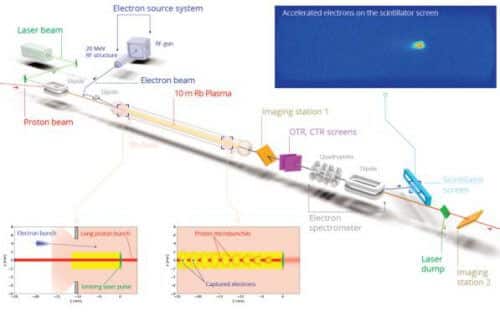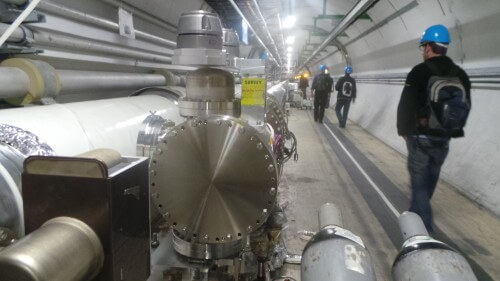Researchers have demonstrated a new method for accelerating electrons to very high energies over short distances

The Large Hadron Collider (LHC) of the European Organization for Nuclear Research (CERN) near Geneva is considered the largest particle accelerator in the world. The accelerator itself is located in a circular tunnel that is 27 kilometers long, at a depth of 175 meters below the surface of the ground on the border between the countries of France and Switzerland. This accelerator helped scientists discover the boson-Hicks particle, the last particle predicted within the standard model of particle physics (Wikipedia). Following the discovery of this particle, the main scientific goal of physicists working in the field of high energy today is to identify the properties of this new particle and reveal other phenomena in the high energy framework. As a result, there have been several rapid developments in high-energy particle accelerator technologies. However, the technologies we use today can only be improved and expanded following major investments. Because of this, there is an urgent need to develop high energy accelerators that will be cheaper.

An international team of physicists, working as part of the AWAKE (Advanced Proton Driven Plasma Wakefield Acceleration Experiment) project in Saran, reported that they succeeded in conducting a groundbreaking experiment that demonstrates a new form of accelerating electrons to high energies - a finding that could dramatically reduce the overall size of particle accelerators in the future and reduce the their cost. An article describing these important findings was recently published in the scientific journal Nature. "The new technology will bring about a paradigm shift in the development of high-energy particle accelerators in the future," said the chief researcher. "The latest achievement could allow engineers to drastically reduce the size of future particle accelerators, while reducing the large amounts of financial resources required to build and operate them." The collisions of high-energy particles created in such facilities allow physicists to study the most fundamental laws of nature, while providing a basis for advances in a wide variety of fields."
In general, experiments in the field of particle physics are based on oscillating electric fields, called 'radio frequency cavities', as well as powerful magnets used to accelerate particles to high energies. As a more economical alternative to accelerate particles more efficiently, a wakefield accelerator was proposed. In this type of accelerator, physicists beam a beam of electrons, protons or a laser through a plasma. Free electrons in the plasma move towards the beam, create an overconcentration within it, return back and break up to form a bubble behind the beam as well as powerful electric fields. If additional particles (e.g., electrons) are injected into the trail, it can accelerate them for a short time within an electric field ten times stronger or more. As part of the research, the activity of a wakefield accelerator for proton-based plasma was demonstrated for the first time. The powerful electric fields, created by series of microbunches of protons, were sampled with a bunch of electrons. These electrons were accelerated to a speed of up to 2 GeV in about ten meters of plasma while being measured with a magnetic spectrometer. This method has the potential to accelerate electrons to the level of a teraelectron volt (TeV, 1012 electron volts) within a single acceleration step.

2 תגובות
Questions:
1. In the sentence that opens the article, the name of the method is explained: "AWAKE (Advanced Proton Driven Plasma Wakefield)
acceleration experiment)
But there is no connection between the initials and these words!!!
2. In the last paragraph of the article it is explained that energies of about 2GeV can be reached using a device 10 meters long; If so, reaching TeV will require a device 10,000 meters long (that is, about 10 km) - which is the order of magnitude of the accelerator that already exists today. If so, there is no reduction in the size of the booster! So what did the sages do in their regulation?!? The whole article is meaningless!!!
Interesting article...if only the wording was less cumbersome: "reducing the large amounts of financial resources required" to "significantly reducing the (large?) resources required"